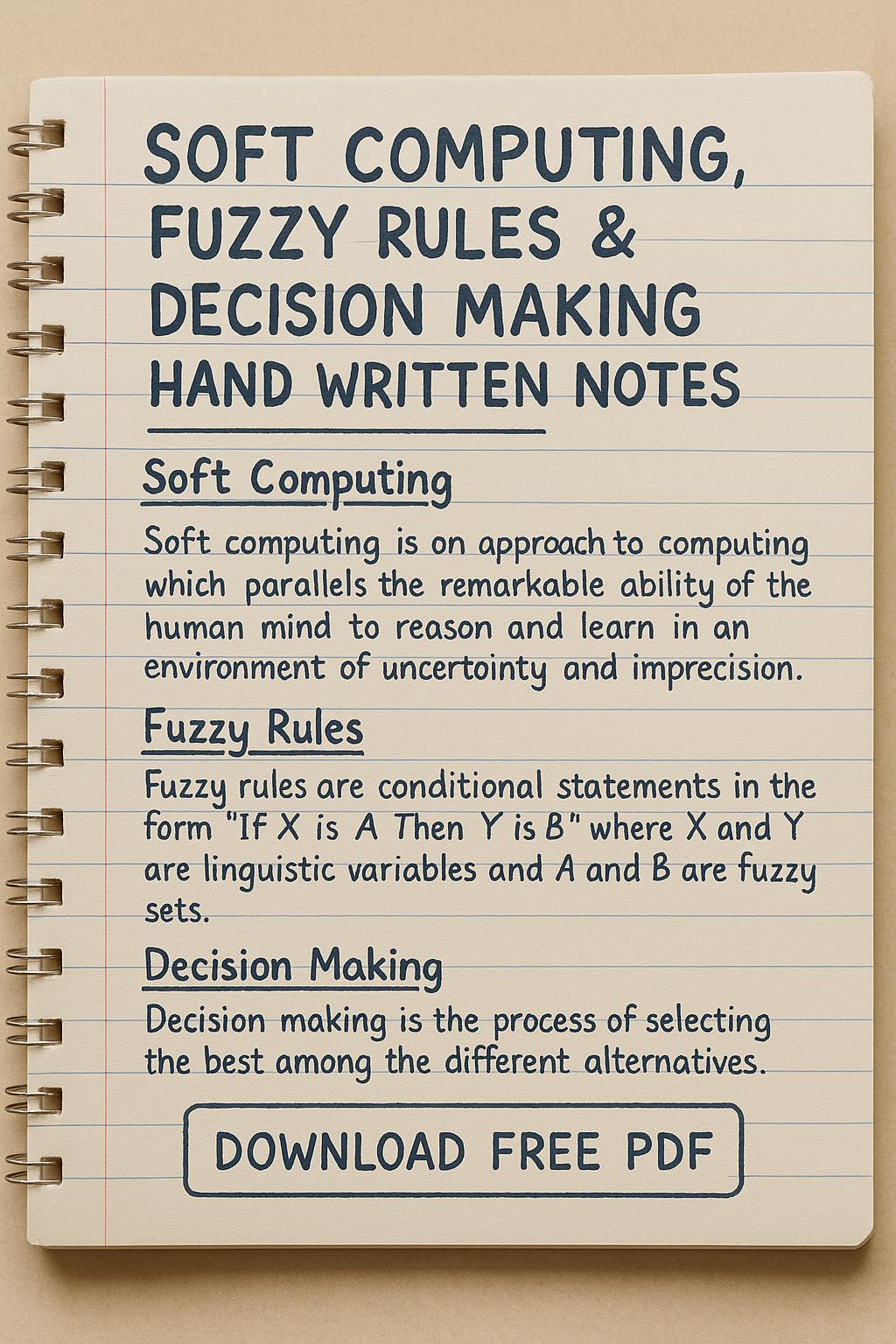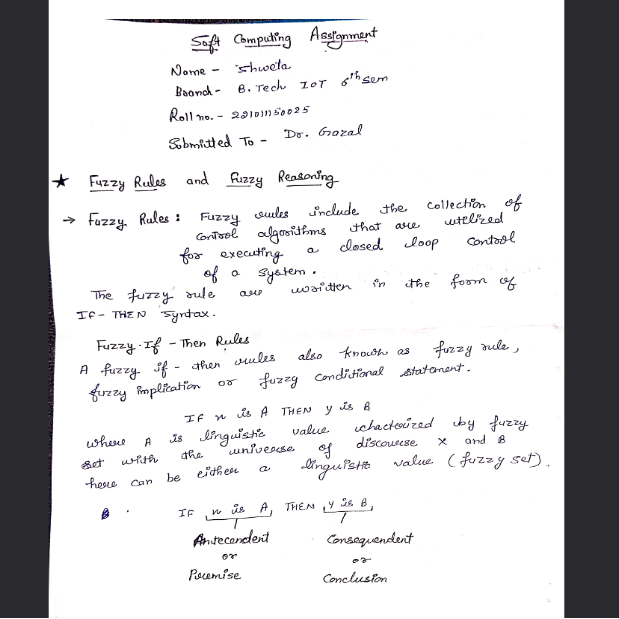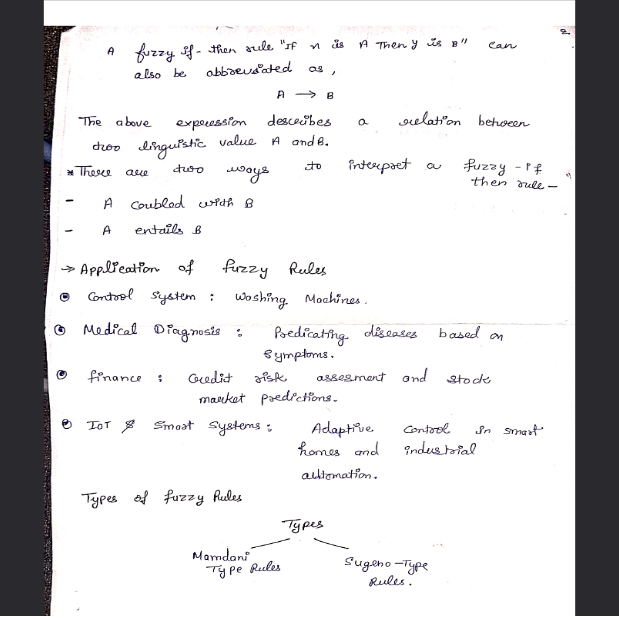Soft Computing, Fuzzy Rules & Reasoning, and Fuzzy Decision Making
Download free handwritten notes on Soft Computing, Fuzzy Rules, and Fuzzy Decision Making. Learn about fuzzy logic, reasoning, and real-world applications. Perfect for students and researchers!

Overview
Soft Computing, Fuzzy Rules & Reasoning, and Fuzzy Decision Making
Soft computing is a computing paradigm that deals with uncertainty, approximation, and imprecision to solve complex problems efficiently. Unlike traditional computing, which follows strict binary logic, soft computing incorporates methods like fuzzy logic, neural networks, and genetic algorithms to handle real-world challenges. It enables machines to process vague or uncertain data using techniques such as fuzzy logic for approximate reasoning, neural networks for pattern recognition and learning, genetic algorithms for optimization, and probabilistic reasoning for managing uncertainty.
Fuzzy logic extends classical Boolean logic by allowing partial truths, making it useful for vague or ambiguous reasoning. Fuzzy rules use IF-THEN statements to make logical decisions. For example, IF temperature is high, THEN fan speed is fast; or IF traffic is heavy, THEN travel time is long. Fuzzy reasoning applies these fuzzy rules to process inputs and determine outputs. For instance, IF a room temperature is warm, THEN the air conditioner runs at medium power; or IF vehicle speed is fast and the road is wet, THEN apply low braking force.
Fuzzy decision making helps select the best option when dealing with uncertain or vague information. It is commonly used in industrial automation, medical diagnosis, and financial analysis. For example, IF the market trend is positive AND risk is low, THEN invest a high amount; IF the market trend is neutral AND risk is medium, THEN invest a moderate amount; IF the market trend is negative AND risk is high, THEN invest a low amount. This approach allows for flexible and intelligent choices rather than rigid binary decisions.
Frequently Asked Questions (FAQs)
1. What is Soft Computing?
Soft computing is a computational approach that deals with uncertainty and imprecision using methods like fuzzy logic, neural networks, and genetic algorithms.
2. How does fuzzy reasoning work?
Fuzzy reasoning applies fuzzy logic principles to real-world decision-making, allowing partial truths instead of rigid true/false conditions.
3. What are some real-world applications of fuzzy decision-making?
Fuzzy decision-making is used in medical diagnosis, stock market analysis, weather forecasting, industrial automation, and AI systems.
4. Where can I download free notes on Soft Computing?
You can download handwritten notes for free from our website. Simply click the provided link!
5. Are these notes helpful for competitive exams?
Yes! These notes are structured to help students, researchers, and professionals preparing for competitive exams like GATE, UGC-NET, and university-level AI courses.
Leave a Comment: 👇




